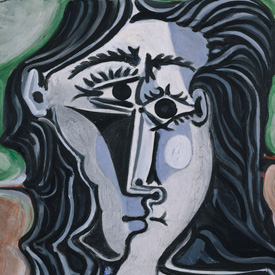Dynamics of Perception
My previous blog was about perception of beauty and how marketers influence people perception and we also figured out that it is somewhat ethical and it plays a vital role in profit generation and brand image. And the Dove social experiments campaign proves consumers act and react of their perception and not on the basis of object reality, for each individual, reality is a totally personal phenomenon, based on that person’s needs, wants values and personals experiences. Hence from a marketer’s perspective consumers perception is much more important than their knowledge of reality.
We defined perception as the process by which an individual receives, selects and interpret stimuli to form a meaningful picture of the world or we can say “how we see the world around us”. A Stimulus is a unit of any of the senses. And the study of perception is largely the study of what we add to and subtract from raw sensory inputs to produce our own picture of the world and most of it is done subconsciously.
There are three aspects/elements of perception:
- Perpetual selection– We are bombarded with lot of stimuli every minute of every day and our selection of the stimuli depends on two major factors, our previous experience which effects our expectation and our motive at the moment of time like needs, desires, interest and so on. People tend to ignore the stimuli that are irrelevant to their needs. This helps a marketer decide the segments to which the product can be targeted, this is where innovative advertisements play a vital role.
Another important factor which determines the probability of the stimuli to be perceived is the nature of the stimuli i:e its physical attributes that is package design, brand name, advertisements and commercials etc.
- Perpetual organisation – We humans do not experience stimuli as separate and discrete sensations rather we organise them into groups and perceive them as unified wholes.
Three most basic principles of perceptual organisations are Figure and Ground, Grouping and Closure.
For example- After the destruction of World Trade Centre, if we want to advertise an airline and feature a flying aeroplane, photographed from the ground up, between two glass high-rise building. The viewer rather than focusing on the plane and the brand (i.e. The Figure) will only think about the two tall towers (i:e The Ground) and the plane crashing into them. Thus advertisers will have to plan their advertisements carefully to make sure that the stimulus they want to be noted is seen as the figure and not as ground.
Similar with Grouping and Closure, individuals tend to group stimuli and look for closure so that they form a unified picture or impression. It is clear that perceptions are not equivalent to the raw sensory input of discrete stimuli, rather people tend to add or subtract from stimuli to which they are exposed according to their expectations and motives, using generalised principles of organisation. (Gestalt Theory)
- Perpetual interpretation– Stimuli are highly ambiguous and are usually interpreted is such a way that they serve to fulfil personal needs, wishes, interest and so on. And how close these interpretations are to reality, depends on the clarity of the stimulus, past experience, motives and interests or in other words is highly subjective. And influences that tend to distort objective interpretation include physical appearance, stereotypes, halo effects, irrelevant cues, first impressions and the tendency to jump into conclusions.
Now the point we can discuss is how can marketers overcome this sensory adaptation and increase the likelihood that consumers will notice their advertisements?
(References:-Schiffman, L, O’Cass, A, Paladino, A, & Carlson, J 2013, Consumer Behaviour, n.p.: French’s Forest, NSW Pearson Australia, [2013], DEAKIN UNIV LIBRARY’s Catalog, EBSCOhost, viewed 17 August 2015)

